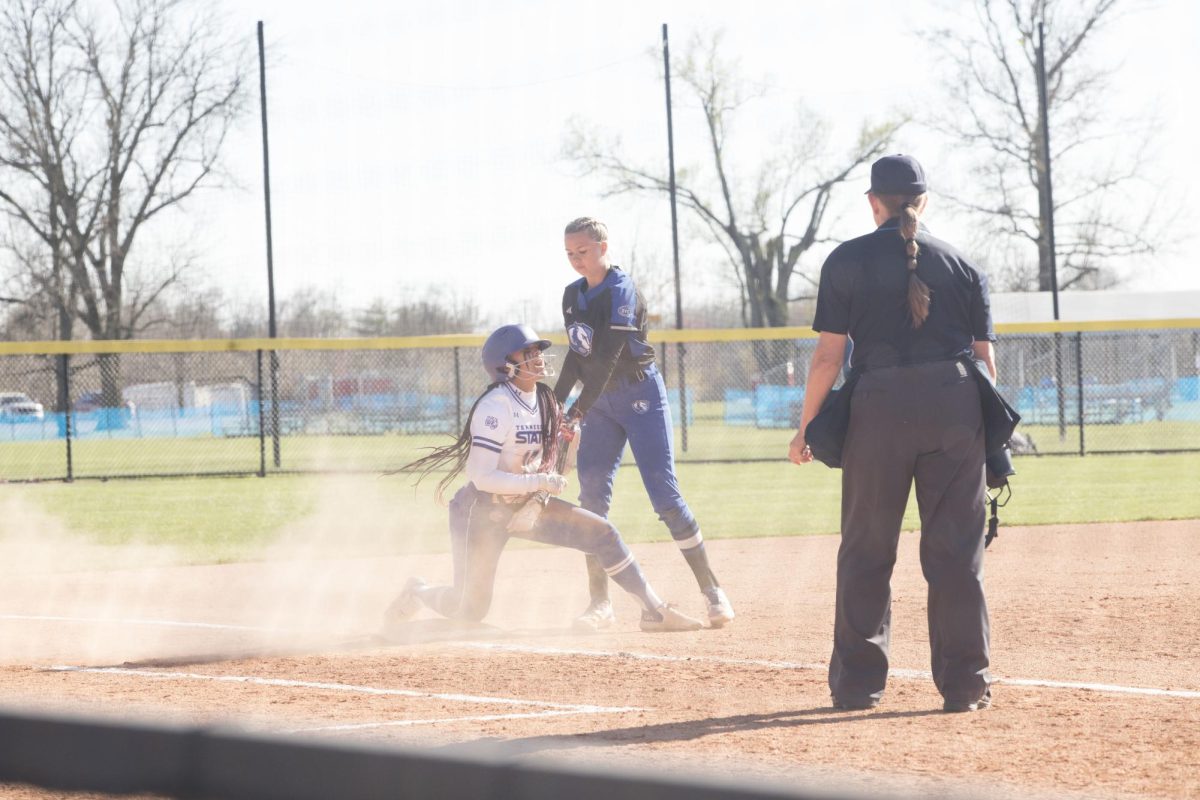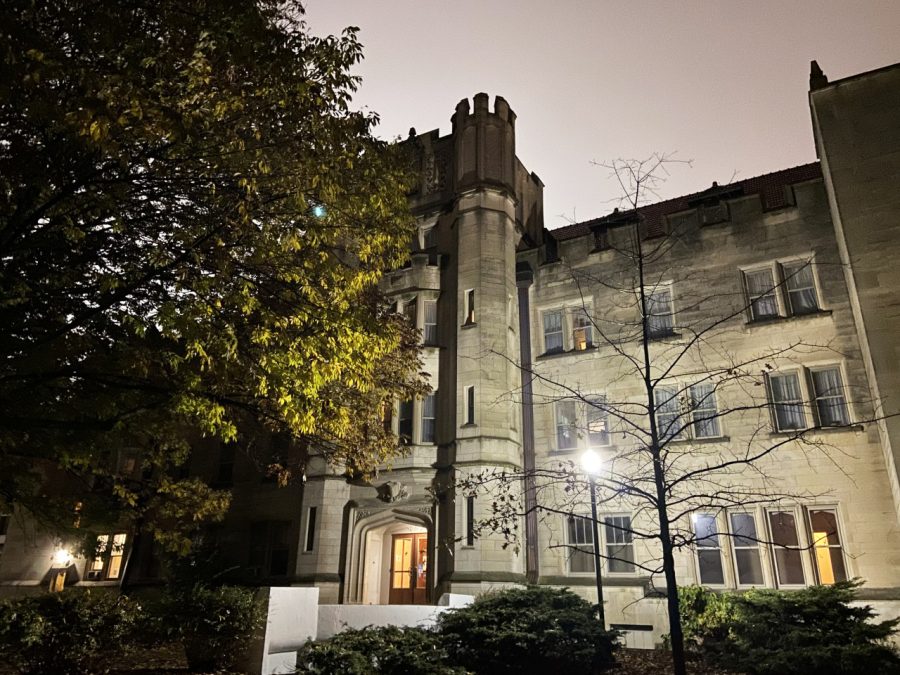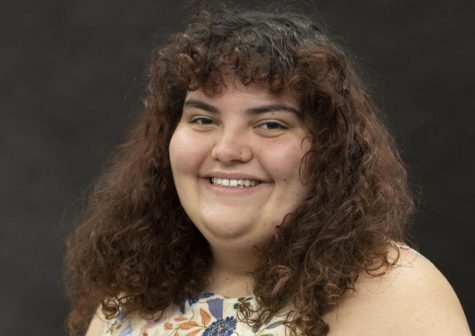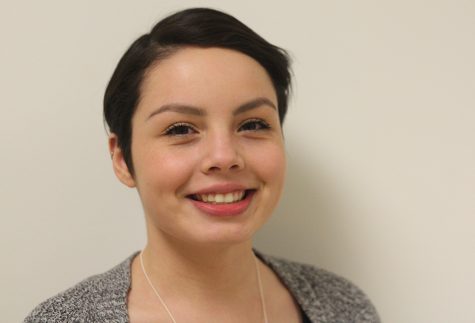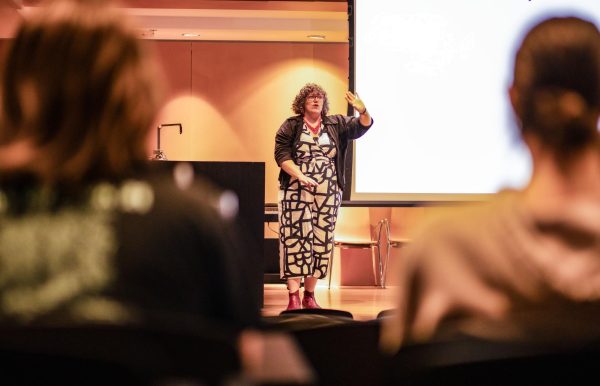Pemberton Hall legends continue to flourish
Pictured is the front of Pemberton Hall.
October 30, 2019
While many versions of the legend of the ghost of Pemberton Hall exist, the truth behind the legend may be more interesting.
As one legend has it, Mary Hawkins was restless one cold night in 1917 and went to the fourth floor of Pemberton Hall to play the piano when a disgruntled janitor came up behind Hawkins and bludgeoned her to death.
Another says that a resident Hawkins was responsible for was the one who was bludgeoned to death. After being bludgeoned, the resident dragged herself down the stairs and to Hawkins’ door where her knocks went unheard and she supposedly died. Hawkins would find the young woman in the morning and later kill herself out of guilt.
However, the truth is that Hawkins began acting strangely toward the end of her tenure and the president of the university, Livingston C. Lord, signed papers to have Hawkins committed to the Kankakee insane asylum where she died from symptoms of syphilis.
After her passing her body was placed in Pemberton Hall for students during a period of mourning, and she was buried near Charleston.
Over the years students have told stories and shared their experiences of what they think involved the spirit of Hawkins.
It is because of the myths associated with Pemberton Hall many students believe the reason the fourth floor of the building is closed is because of a murder, when in fact the floor was closed because it was not up to new safety regulations.
Now the floor sits with old furniture and fixtures of decades past, holding the memories of the past and present residences of Pemberton Hall.
Beyond the lore that surrounds the hall is an expansive history beginning in the early 1900s.
Former Eastern President Lord came to Eastern in 1898 from what is now Minnesota State University-Moorhead.
Mark Hudson, director of Housing and Dining, said Lord asked about on-campus housing upon his arrival to Eastern and spent close to a decade working to have a residential aspect to the school.
Pemberton Hall was built in 1908 and opened in 1909 as the first state school residential hall in Illinois.
The hall was named after Illinois State Senator Stanton Pemberton, who played a large role in getting funding from the state for the hall.
After two women, Miss Pfeiffer and Miss Gross, held the title of Head of Pemberton Hall for a year each, Hawkins came in 1910 and worked in the position until she was institutionalized.
In 2008 when the university was celebrating Pemberton Hall’s centennial, they filmed interviews of women who had previously lived in the hall.
Hudson said one of the women interviewed said the most memorable experience she had during her time at Eastern was a visit from First Lady Eleanor Roosevelt.
“Roosevelt was on campus because she was touring all the New Deal sites, and there were three of them in Coles County, so she actually stayed (in Pemberton Hall) and did her stuff in the town for a day or so and then … talked to 2,500 people in what is now McAfee (Gym), and when she was done with that she came back (to Pemberton Hall) and they gathered 100 women that lived in this building for her to talk to,” Hudson said.
Almost a decade after the centennial celebration, Hudson said he received an email from Hawkins’ relatives wanting to learn more about her.
“I got an email from a guy … Gilbert Hawkins and his wife Annette who live in New Zealand, the great grandnephew of Mary Hawkins, and he says, ‘I’m doing some genealogy about my auntie and I wanted to find out where she worked. Would it be OK if I came up?’” Hudson said.
During the couples’ visit, a committee took the Hawkinses to various sightseeing areas in the region.
“We took them to Chicago and Saint Louis and Indianapolis and he was a farmer, so we took him out on a farm,” Hudson said.
Before leaving, Hudson said Gilbert Hawkins left the university with a gift: a wooden sculpture.
“So there are three sculptures like this. We have one, he has one and his sister has one, and his whole thought process was he wanted to tie the three of us together because of the significance that Mary had lived in this building for that period of time that she did,” Hudson said.
The frame for the sculpture was used from a 300-year-old tree the university was cutting down due to its age, Hudson said.
“The thought was that Mary Hawkins would have walked under that tree when she worked here, so taking the wood from it to make it a frame and placing (the sculpture) and (the frame) together just seems sort of poetic,” Hudson said.
Some others believe what maybe the most poetic is the idea that Mary Hawkins is still on campus in spirit, watching over “her girls,” as the Pemberton residents she watched over were called.
Beyond the spiritual and mythical aspects of Mary Hawkins that are most talked about, she contributed and added to what is now a rich history at Pemberton Hall and has forever helped to shape Eastern’s history.
Corryn Brock can be reached at 581-2812 or [email protected].










